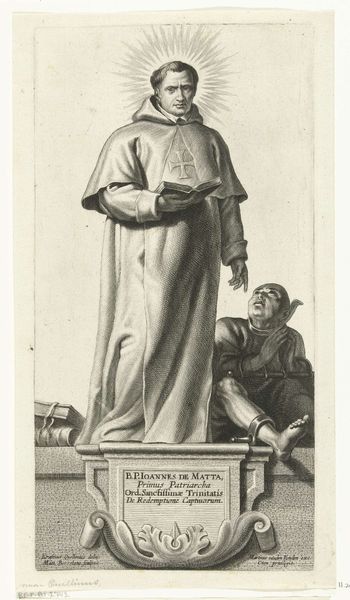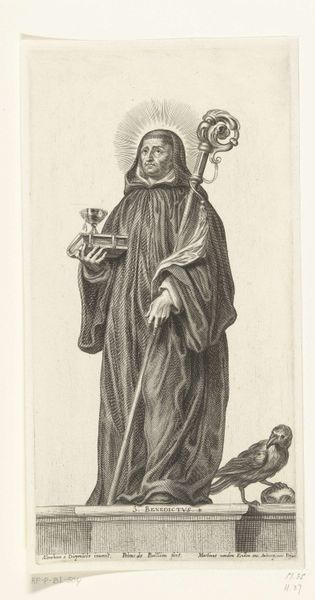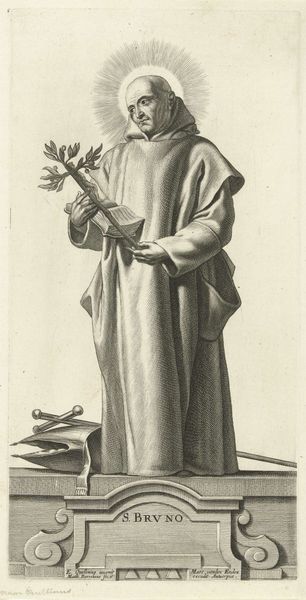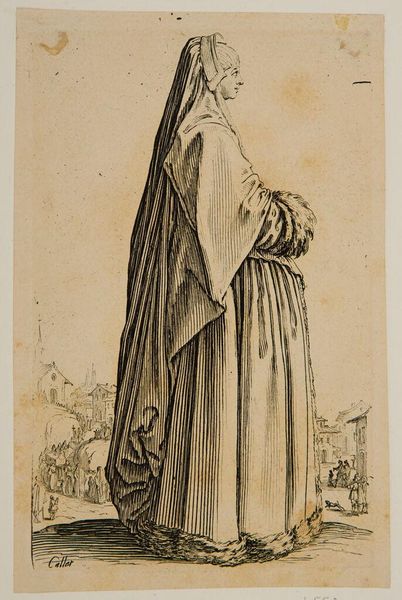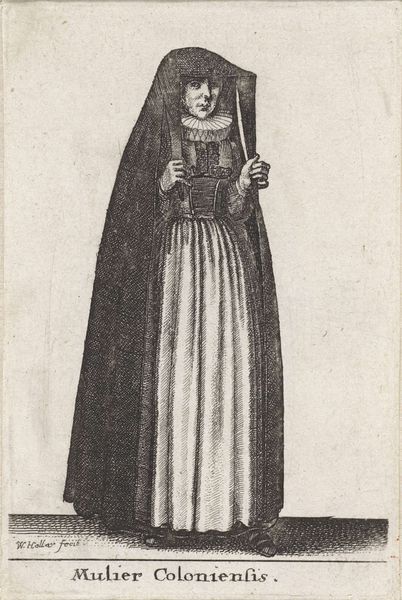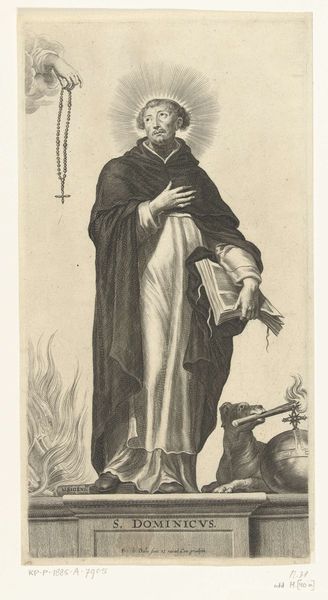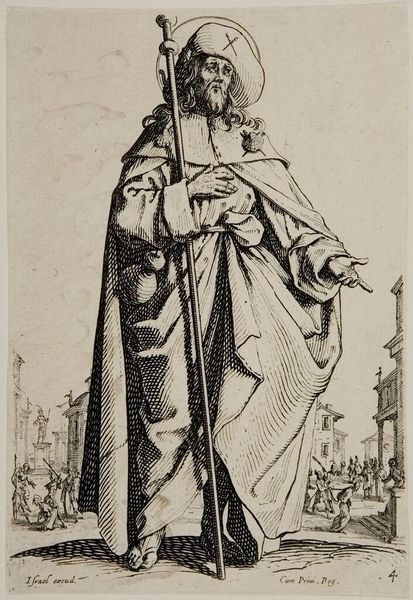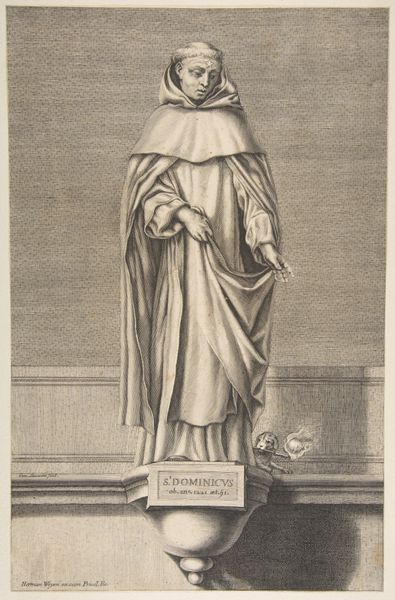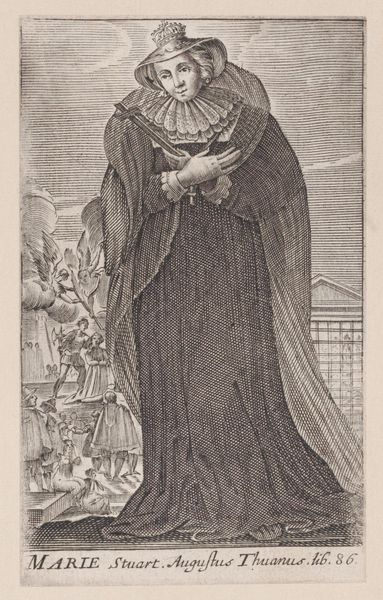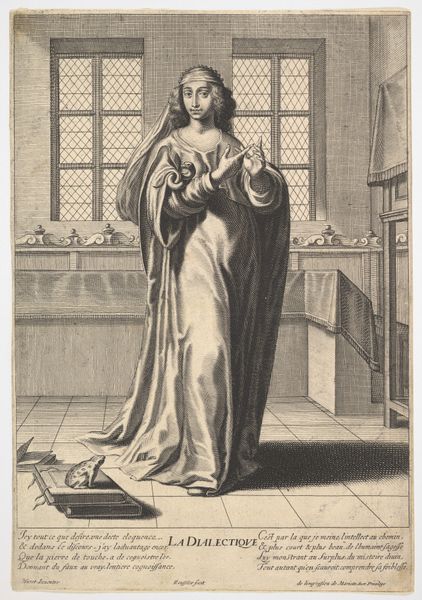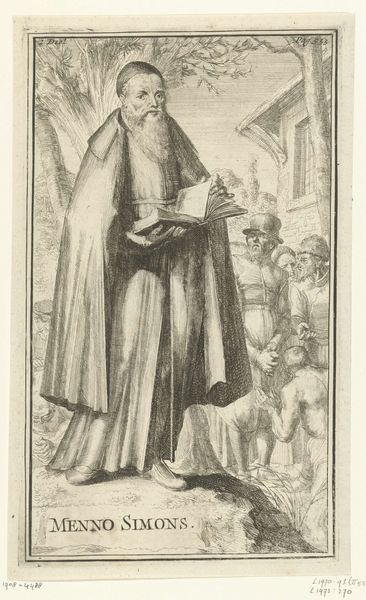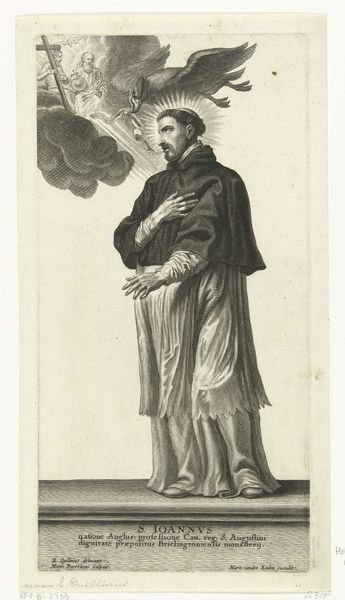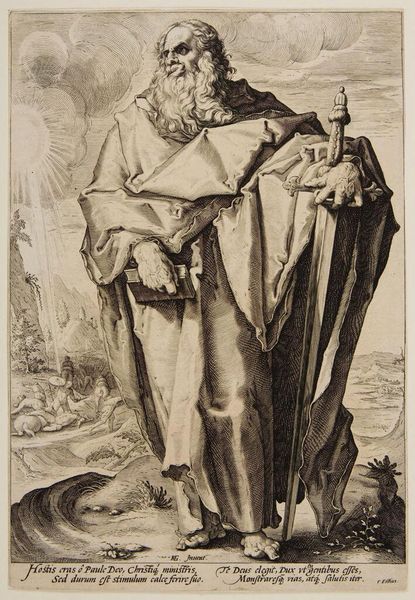
print, engraving
#
portrait
#
baroque
# print
#
figuration
#
line
#
history-painting
#
engraving
Dimensions: width 135 mm, height 250 mm
Copyright: Rijks Museum: Open Domain
Editor: So, here we have "Heilige Elisabet van Hongarije," or Saint Elisabeth of Hungary, an engraving from 1644 by Mattheus Borrekens. The starkness of the black and white gives it a rather serious tone, and the level of detail achieved with just lines is quite impressive. What catches your eye in this piece? Curator: The first thing I see is a story whispered in light and shadow. Elisabeth, holding court in the mundane miracle of everyday generosity, contrasts beautifully with the divine halo. Notice how the crown at her side nestles atop the book? Power willingly shelved for compassion. A potent choice, don’t you think? It suggests earthly status relinquished for a higher calling, and a deeper understanding of divine service. I find myself wondering about the pauper kneeling before her - is he an exaggeration of suffering, designed to enhance her piety, or a genuine soul reaching out for solace? What are your thoughts on their exchange? Editor: It definitely feels symbolic. Like she's giving more than just alms; maybe offering dignity or a sense of worth? Do you think the artist had a particular message they wanted to convey? Curator: Mattheus Borrekens clearly positions Elisabeth as an exemplar. The text at the base— "S. Elizabeth"— leaves no room for misinterpretation! Beyond religious piety, though, it touches upon something universal, don't you think? How power and privilege can and, perhaps, *should* be wielded. The baroque period was all about grand statements, wasn't it? Yet, even within this grandeur, there are hints of intimacy and humility. Editor: I never really considered how political religious art of this time was! Thanks, I’ll definitely think of this print differently now.
Comments
No comments
Be the first to comment and join the conversation on the ultimate creative platform.
